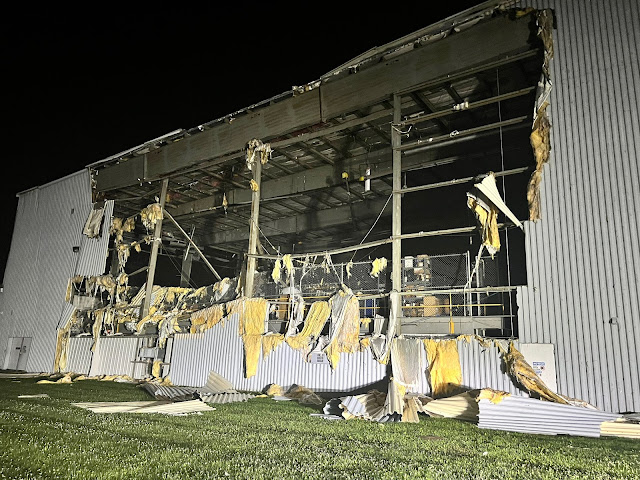What is a Derecho?
The derecho which roared through Fort Wayne on June 13 last summer caused a considerable amount of damage, but I don't think it matches the extent caused by the one which came through June 29, 2012. Until the one in 2012 devastated Fort Wayne's trees and infrastructure, I had never even heard of a derecho. In fact, several weather-related terms have come into popular use since then, including firenado (fire tornado), the polar vortex, and even the Ridiculously Resilient Ridge. Most of these terms are not new, but also were not in popular use until more recently.
A derecho is a widespread, long-lived, straight-line wind storm that is associated with a fast-moving group of severe thunderstorms known as a mesoscale convective system. Where I live, I now know that they are actually fairly common here and happen every year or two. However, like many other extreme weather events, climate change is causing these events to become both more extreme and more common as time moves forward.
Several other events have combined in past years to cause these storms to be even more destructive than they otherwise would have been. Tree decline, most notably here caused by the emerald ash borer, caused literally thousands of ash trees to die in northeast Indiana, and the storm in 2012 caused many of those dead trees to topple onto houses, power lines, roads, and other infrastructure to make getting around in Fort Wayne difficult to impossible for several days after the storm. In addition, many if not most people suffered from loss of electricity for about a week after the storm as well.
As I have mentioned before, the Clausius-Clapeyron Equation has much to do with the strengthening of storms and the amount of rainfall in general due to warmer temperatures caused by climate change. No differently than conditions elsewhere have driven changes in how particular infrastructure is adapted to provide service with fewer interruptions, changes were made locally here to the power grid to accommodate stronger storms that might lead to trees being blown down, and this has improved the situation in subsequent storms in addition to the fact that many diseased and/or dead trees were blown down in the 2012 derecho making later storms less of a threat overall. Sadly, the storm this last summer destroyed many trees in an Allen County park, Fox Island, where over 1000 trees were blown down causing the park to be closed until further notice. The latest news is that the park hopes to reopen sometime next summer.
Some areas in Fort Wayne were hit particularly hard last summer but most of the city appeared to have escaped the serious damage which occurred in 2012. Some of this was by design through infrastructure strengthening, some due to a smaller storm system, some due to previous damage limiting later damages, and perhaps some by pure luck.











We experienced our first derecho in Ontario in decades this past May. It hit our community quite hard and a town to the northeast of us even harder. Not much in the way of human casualties but a lot of property damage due to falling trees. Not sure if the pictures/video will come through but here are a couple I took soon after the derecho passed: IMG_4730.jpg; IMG_4735.jpg; IMG_4728.MOV.
ReplyDeleteSteve, unfortunately, only URLs can be displayed and then copied and pasted into the address bar in order to access links. If there is a website that has these pictures and videos displayed, please feel free to include the web address.
Delete